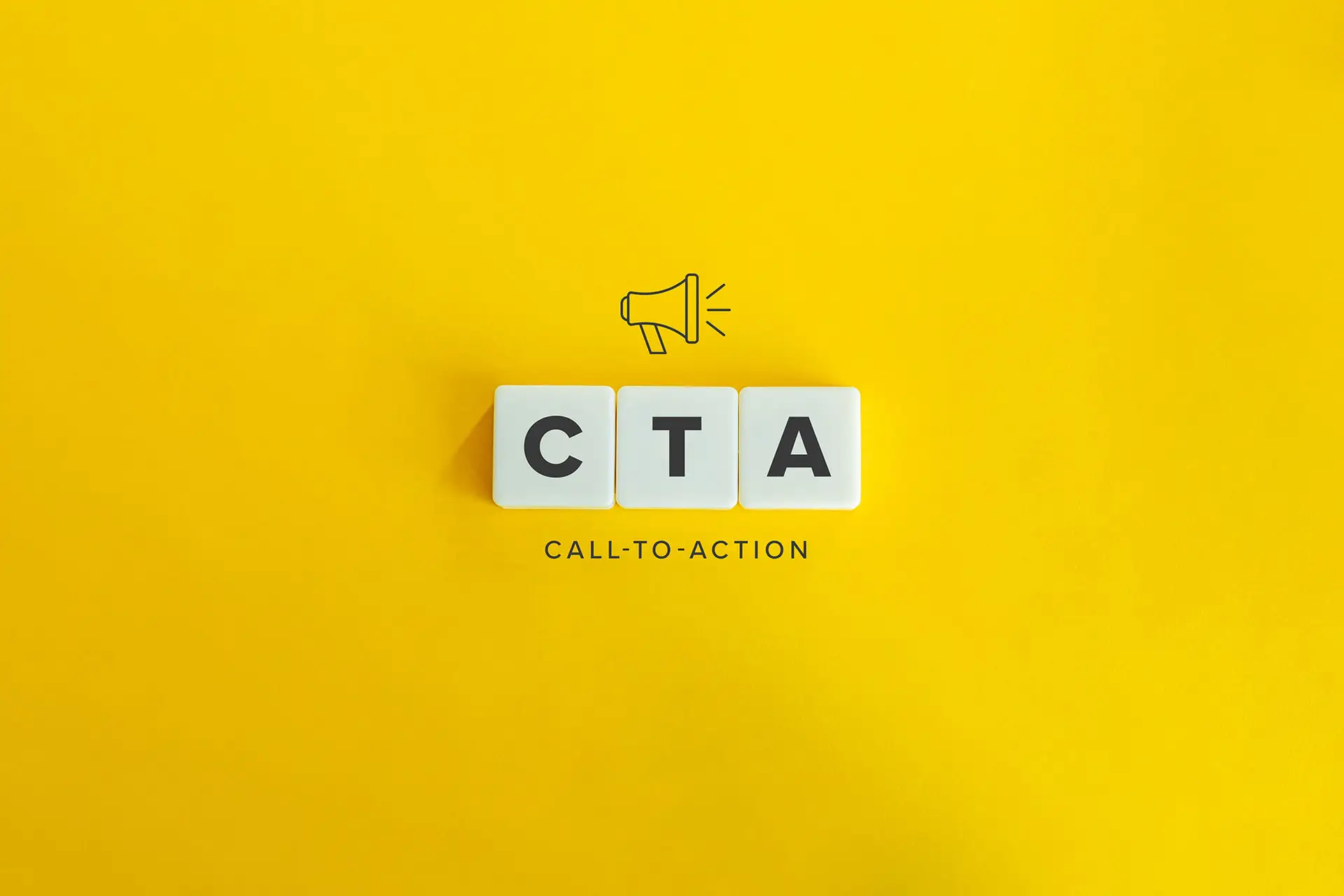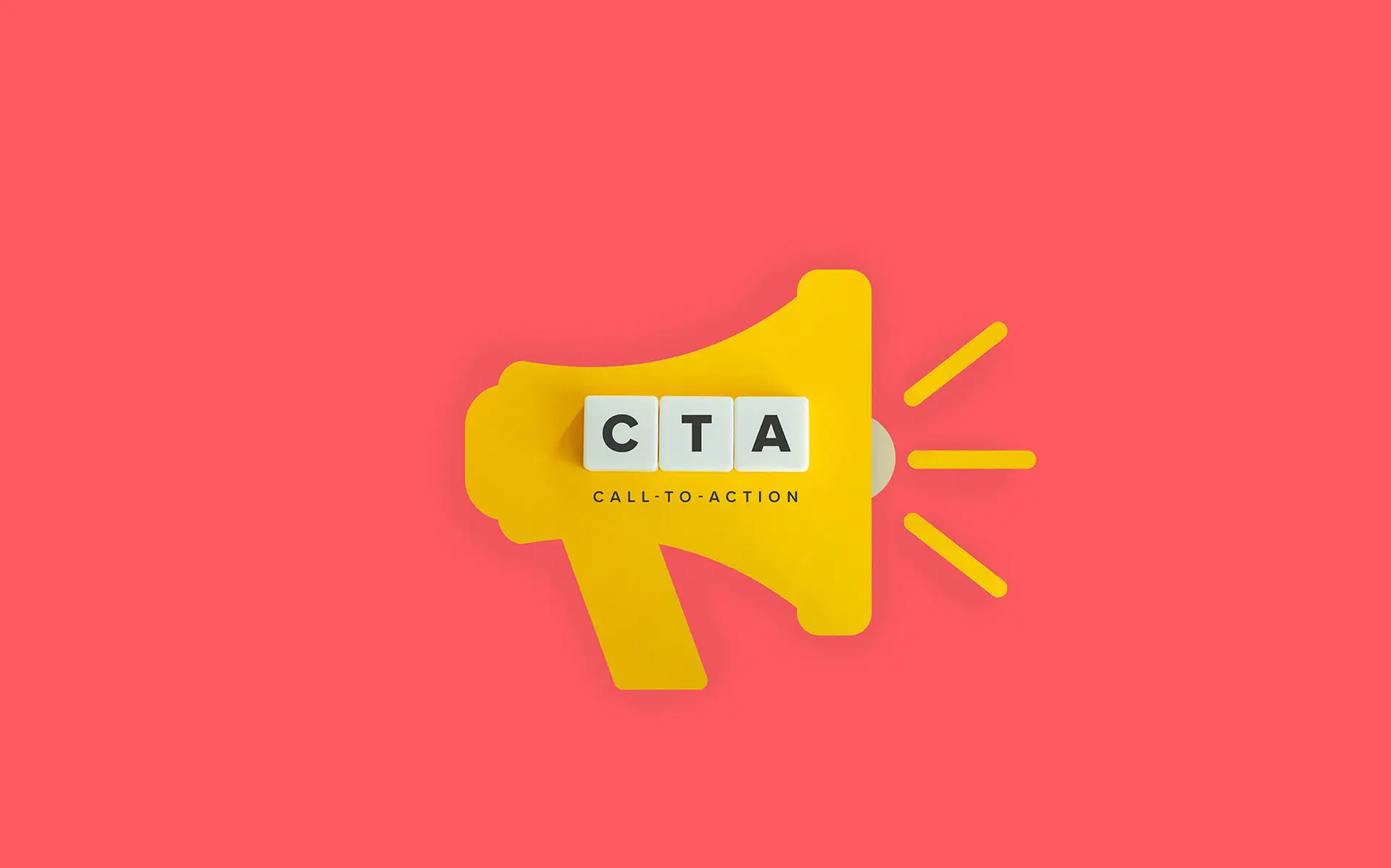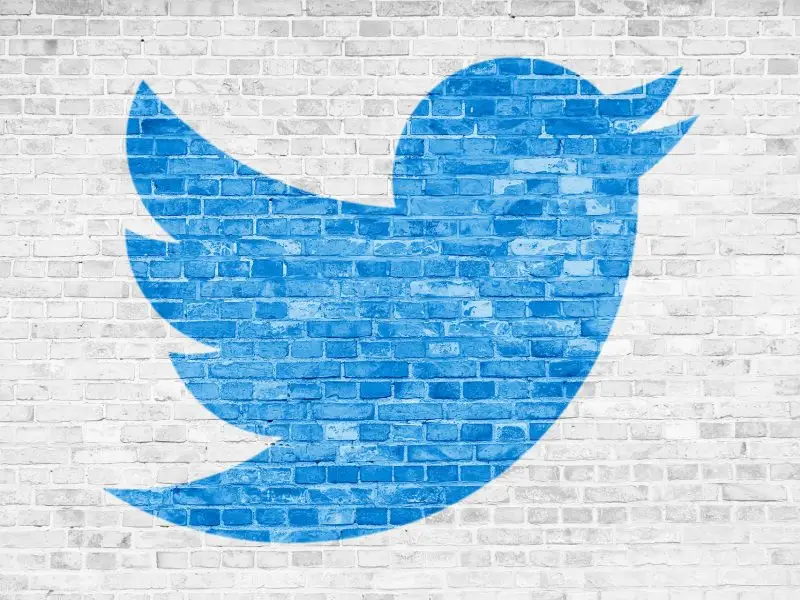How to Write a Good Call to Action
Creating a compelling call to action (CTA) is a pivotal component of any marketing collateral. Are you finding that your audience isn’t engaging as you’d hoped? Do you wonder why prospects aren’t converting? A well-crafted CTA could be the key, steering your audience towards the action you wish for them to take. In this article, we’ll look deeper into how to create an effective CTA, no matter your sector and provide examples to help sharpen your focus.
Understanding the Basics
A CTA is more than just a prompt; it serves as a beacon on your website or marketing materials, guiding users towards a specific action that could convert them into customers or clients. This directive often takes the form of a button, link or even a simple line of text. However, despite its simplicity, the CTA is one of the most critical parts of your marketing message—it’s where you clearly instruct your audience on what to do next and it is often the piece that is missing.
A strong CTA is clear, concise and compelling. It tells your audience exactly what you want them to do and often, why they should do it. Whether it’s making a purchase, signing up for a newsletter or downloading a document, a well-crafted CTA can make the difference between a successful marketing campaign and one that falls flat.

The Anatomy of a Strong CTA
Action-Oriented Language
The language of your CTA must be explicit and direct. It’s essential to use verbs that leave no room for ambiguity. Words like ‘Buy’, ‘Call’, ‘Book’, ‘Visit’, ‘Register’, ‘Subscribe’, or ‘Download’ make it clear what action is required from the user. The key here is to be as specific as possible—tell your audience exactly what you want them to do. For example, instead of a vague ‘Click Here’, opt for ‘Download Your Free Guide’ or ‘Sign Up for Our Newsletter Today’.
Creating Urgency and Relevance
A sense of urgency can significantly boost the effectiveness of your CTA. Phrases such as ‘Limited Offer’, ‘Act Now’, or ‘Only a Few Spots Left’ can encourage users to take immediate action rather than postponing their decision. However, it’s crucial that this urgency feels authentic and not contrived. Your audience should feel that they’re genuinely missing out on something valuable if they don’t act quickly.
Relevance is equally important. Your CTA must resonate with your audience and align with their needs or pain points. Consider where your audience is in their buyer’s journey—are they just learning about your product, or are they ready to make a purchase? Tailoring your CTA to their specific stage can make it more compelling and increase your conversion rates.
Design That Captures Attention
The design of your CTA should be impossible to miss. This might mean employing a contrasting colour scheme that stands out against the rest of your design or using a larger button size that naturally draws the eye. The placement of your CTA is also crucial—ideally, it should be located where users are most likely to see it, such as at the end of a blog post, or prominently on your homepage.
The font size and style should be easy to read, even at a glance. Simplicity often works best; your CTA should be clear and uncluttered, avoiding any elements that might distract from the intended action.
Leveraging Psychology
Understanding the psychological triggers that motivate your audience can dramatically enhance the impact of your CTA. Humans are naturally driven by the desire to gain something of value and the fear of missing out (FOMO). Your CTA should tap into these motivators. For instance, offering a ‘Free Trial’ or a ‘Money-Back Guarantee’ can alleviate fears about committing to a purchase, while highlighting a ‘Limited Time Offer’ can create a sense of urgency and exclusivity.
Social proof is another powerful psychological tool. Including elements like ‘Join Over 10,000 Satisfied Customers’ or ‘See Why Others Love Our Product’ in your CTA can build trust and encourage action.
Enhancing with Visuals
Visual elements can significantly enhance the effectiveness of your CTA. A ‘Download Now’ button might be more compelling with the addition of a small icon, like a downward arrow or a computer. These visuals should complement the text and reinforce the message without overwhelming it. The goal is to create a harmonious blend of text and imagery that guides the user towards the desired action.
For video CTAs, consider using annotations or pop-ups that remind viewers to take action, such as ‘Click to Learn More’ or ‘Watch Next’. These can keep engagement high and provide a seamless transition to further content or a conversion point.
Accessibility is Paramount
An often overlooked but crucial aspect of any CTA is accessibility. Your CTA should be designed so that all users, including those with disabilities, can easily interact with it. This includes using alt text for any images, ensuring that buttons are large enough to be clicked easily and set away from other clickable areas and selecting high contrast colours to accommodate users with visual impairments.
Consider users who may be navigating your site via keyboard or screen readers. Make sure that your CTA can be easily accessed and understood through these tools, ensuring an inclusive experience for all.

Example CTAs
Crafting the perfect CTA often depends on the specific context in which it will be used. Below are examples of CTAs tailored for different scenarios and marketing materials. These examples illustrate how to adapt your messaging to suit various goals, audiences and stages in the buyer’s journey.
E-commerce Websites
- Product Pages:
“Add to Cart Now and Enjoy Free Shipping!”
“Buy Now – Limited Stock Available!” - Checkout Page:
“Complete Your Purchase – Secure Checkout”
“Save Your Basket – Sign Up and Buy Later!” - Post-Purchase:
“Leave a Review and Earn Reward Points!”
“Track Your Order – Get Real-Time Updates!”
Email Marketing Campaigns
- Newsletter Signup:
“Join Our Community – Get Weekly Tips and Insights!”
“Subscribe Today and Receive a Free Guide!” - Promotional Email:
“Unlock Your Discount – Shop Now!”
“Limited-Time Offer – Grab Your Deal Before It’s Gone!” - Re-engagement Campaign:
“We Miss You! Come Back and Enjoy 10% Off Your Next Purchase!”
“It’s Been a While – Explore What’s New!”
Social Media Posts
- Instagram:
“Double Tap if You Agree – Shop the Look Now!”
“Swipe Up to Learn More About Our Latest Collection!” - Facebook:
“Share Your Thoughts – Comment Below!”
“Tag a Friend Who Needs This – Discover More!” - Twitter:
“Retweet to Enter Our Giveaway!”
“Join the Conversation – Use #OurBrand!”
Blog Posts
- End of Article:
“Enjoyed This Post? Subscribe for More Like This!”
“Ready to Take the Next Step? Contact Us Today!” - Within the Content:
“Curious About This Topic? Download Our Full Guide Here!”
“Want to Learn More? Check Out Our Related Articles!” - Sidebar or Final Page Area:
“Don’t Miss Out – Get Our Latest Updates Straight to Your Inbox!”
“Exclusive Offer – Download Our Free Checklist!”
Landing Pages
- Lead Generation:
“Download Your Free Report Now – Instant Access!”
“Get Started Today – Request a Free Quote!” - Event Registration:
“Save Your Spot – Register for the Webinar!”
“Join Us Live – Sign Up for the Workshop!” - Product Launch:
“Be the First to Know – Pre-Order Today!”
“Discover the Future of [Product Category] – Learn More!”
Physical Marketing Materials
- Brochures:
“Find Out More – Visit Our Website!”
“Call Now for a Free Consultation!” - Postcards:
“Exclusive Offer – Redeem Today!”
“Visit Us In-Store and Save 20%!” - Flyers:
“Join Us This Weekend – Event Details Inside!”
“Call Now to Reserve Your Spot – Spaces Limited!”
These examples showcase the versatility of CTAs across different marketing platforms and scenarios. By tailoring your CTA to the specific context, you can more effectively guide your audience towards the desired action, ultimately driving better engagement and conversions.

Testing and Refining Your CTA
Even a well-crafted CTA can benefit from ongoing testing and refinement. A/B testing different versions of your CTA—varying the text, colour, placement or design—can provide valuable insights into what resonates most with your audience. Regularly reviewing your CTA’s performance and adjusting based on data can help you maintain high conversion rates and continually improve your marketing efforts.
Our Invitation to You
Has this article sparked some ideas, but you’re unsure where to begin? Perhaps your schedule is already packed to the brim? Don’t worry. With our guidance, navigating the marketing landscape can be straightforward and productive.
Book Your Initial Consultation with The Last Hurdle Today! (Did you see what we did there?)
Let’s start a conversation about steering your marketing towards more engaging, rewarding and profitable outcomes. Your next great CTA is just a click away!





